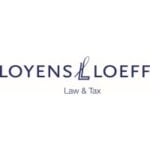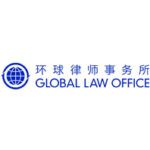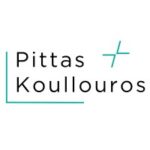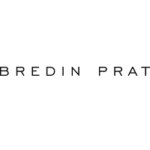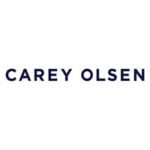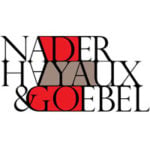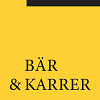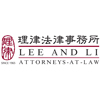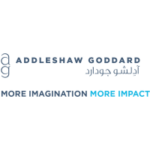-
What proportion of transactions have involved a financial sponsor as a buyer or seller in the jurisdiction over the last 24 months?
2024 has seen both a continuation and an expansion of the role played by financial sponsors generally in the Irish M&A market. During the first three quarters of 2024, the number of transactions involving a financial sponsor increased 145% against the same period in 2023. While overall M&A deal volumes were down approximately 20% in the first half of 2024, as against the same period in 2023, almost one in five deals was undertaken by a financial sponsor or a PE backed company.
Despite the overall decrease in deal volumes, Ireland’s deal values have remained robust so far this year with an increase of over 200% as against the same period in 2023. Financial sponsors have played an important part of this trend, with half of Ireland’s largest 20 deals in the first half of this year involved a PE acquirer.
Continuing a trend seen in previous years, 2023 and 2024 have seen a steady increase in minority investments undertaken by PE investors. This trend is expected to continue as dedicated minority funds look to take advantage of Ireland’s growing economy and the private equity industry more generally is required to be more flexible in the ways in which sponsors deploy capital.
-
What are the main differences in M&A transaction terms between acquiring a business from a trade seller and financial sponsor backed company in your jurisdiction?
Whilst often sector specific, there are two obvious examples of where trade sellers and financial sponsor backed sellers commonly differ regarding key contractual terms: (i) consideration structuring and (ii) risk management.
When it comes to consideration structuring and pricing mechanics more generally, completion accounts remain the preferred mechanism where trade sellers are involved, whereas financial sponsor backed sellers tend to using locked box accounts. In auction processes, financial sponsor backed sellers will also benefit from the ease of comparability between bids on a locked box transaction. Where a pre-sale carve-out is taking place (which tends to be more prevalent in sales involving trade sellers), completion accounts tend to be strongly preferred.
The manner in which contractual risk is borne by trade sellers versus financial sponsor backed sellers remains a key differentiating factor. Financial sponsor sellers will, for the most part, only give fundamental warranties in respect of title and capacity. The target’s management team will typically provide some level of warranty cover in respect of business warranties, but the cap on liability for the management warranties will usually be significantly lower than the overall purchase price, hence the frequent use of W&I insurance to cover the “gap” risk. On the other hand, trade sellers will typically be expected to provide both fundamental and business warranties, albeit in certain competitive sectors, those selling attractive businesses at realistic valuations have been able to significantly reduce their liability caps for such warranties, with caps for business warranties typically ranging from between 20% and 50% of the overall consideration.
-
On an acquisition of shares, what is the process for effecting the transfer of the shares and are transfer taxes payable?
The transfer of shares in an Irish company must be (i) evidenced in writing by executing a share transfer form and (ii) signed by the transferor and, in the case of shares which are not fully paid, or an unlimited company, the transferee. It is also important to check the articles of association or the company constitution to ensure there are no restrictions on the transfer or issue of shares. Where the target is an Irish incorporated company, an Irish stamp duty cost will generally arise upon the acquisition of the shares, at a rate of 1% on the consideration paid (or market value, if higher), depending on how the investment is structured. For certain real estate holding companies, a higher stamp duty rate of 7.5% may apply.
-
How do financial sponsors provide comfort to sellers where the purchasing entity is a special purpose vehicle?
On larger transactions, financial sponsors will typically issue equity commitment letters ahead of funds being drawn down, which can be supported by legal opinions. Equity commitment letters are usually structured as an irrevocable commitment given by the fund to the acquisition vehicle pursuant to which the financial sponsor commits itself to draw down and invest certain funds in the acquisition vehicle for the purpose of either paying the purchase price or, if closing does not occur as a result of the purchaser’s breach, a damages claim. The seller can then enforce its right to specific performance of this commitment letter directly against the fund if it fails to comply with its terms. In the context of third-party funding (whether by traditional banks or by private credit lenders), letters of commitment are less common, and comfort is typically ascertained during and as a result of the due diligence process. The last 24 months in particular have seen an increase in the level of due diligence carried out by such third-party lenders, in tandem with such lenders seeking reliance on pre-transaction due diligence reports prepared by the purchaser’s legal and financial advisors.
-
How prevalent is the use of locked box pricing mechanisms in your jurisdiction and in what circumstances are these ordinarily seen?
From an overall market perspective, completion accounts consideration mechanisms tend to be more commonly used than locked box pricing mechanisms, albeit only marginally. Locked box structures are though, generally preferred by financial sponsor backed sellers for a number of reasons. Most importantly, the locked box mechanism provides greater certainty as to the purchase price at signing, greater control over financial information, fixing the date of the economic transfer of the target before completion. A locked box structure also allows for prompt distribution of sale proceeds to sellers after completion. Furthermore, and as mentioned above, in the context of an auction process, bids are more easily comparable and there is less chance of post-closing accounting-based disputes.
Locked box structures tend to be resisted by buyers where the target is a carve-out of a larger business and separate accounts are not prepared.
-
What are the typical methods and constructs of how risk is allocated between a buyer and seller?
The allocation of risk between a buyer and seller is both deal and sector specific in Ireland. The current market for sale terms have shifted, on balance, to more seller friendly for “grade A” assets, with a return of pre-emptive offers for the most prized business. However, more generally, there is a definite trend whereby transactions are taking longer to execute as buyers spend more time on due diligence, testing valuations in an environment of higher inflation, higher interest rates and, generally speaking, a more challenging macro-economic and geo-political environment.
Financial sponsor sellers will typically assume limited contractual liability under a share purchase agreement in relation to operational matters. Financial sponsor buyers will expect title and capacity warranties and also customary business warranties from sellers, other than where the target business is being sold by another financial sponsor, where the position outlined in paragraph 2 above is generally accepted.
W&I insurance has become increasingly popular in the Irish M&A marketplace in recent years. Typically, a buyer will want the warranties to be as far-reaching and broad as possible whilst a seller will seek to limit the scope of the warranties to reduce the financial impact arising from a warranty claim. Depending on the level of cover acquired, the policy can be used to reduce the seller’s liability to as low as EUR1 for certain assets – in particular property assets, although we are seeing more and more this EUR1 cap applying in other industries. However, the seller typically retains risk for the title and capacity warranties, and full liability will apply if the seller has been found to have acted fraudulently or engaged in willful misconduct or willful deceit.
Financial caps on seller liability for breach of warranty claims of between 25% and 50% of the overall purchase price is common on mid-market and higher value transactions, whereas historically market practice in Ireland would have been for 100% of the overall purchase price to be “on risk” for breaches of warranty. In Ireland, a separate tax deed is typically used to allocate tax risk between a buyer and seller.
A notable trend in the last 12 months, particularly in the technology space, in terms of valuation risk and the price being offered for certain assets, has been the emergence / re-emergence of earn-out structures. We are increasingly seeing these structures used where there is a delta between a seller’s valuation expectation and what financial sponsors are willing to pay for a business.
-
How prevalent is the use of W&I insurance in your transactions?
The use of W&I insurance in M&A transactions across the entire market has been a major development in Ireland in recent years. This has been particularly true over the last five years as a greater proportion of businesses which have been acquired by financial sponsors in recent years are now being brought to market, with the use of W&I insurance being a common feature of such exits. W&I insurance bridges the gap between the buyer’s need for strong deal protection and a seller’s desire for a clean exit free of residual liabilities. Depending on the level of cover sought, W&I insurance can be used to reduce the seller’s liability to as low as EUR1. However, the seller typically retains risk for the title and capacity warranties, and full liability will apply if the seller has been found to have acted fraudulently or engaged in willful misconduct or deceit.
As mentioned above, PE backed sellers will typically bear very little risk outside of fundamental warranties. The cost of the W&I policy is typically borne by the buyer as a deal cost, but we do see various approaches depending on the outcome of due diligence and the nature and scope of the particular policy which is to be put in place.
In general, the allocation of risk in PE transactions has become more balanced. For example, caps on fundamental warranties tend to be limited to total consideration received by sellers.
-
How active have financial sponsors been in acquiring publicly listed companies?
Public-to-private transactions are less common in the Irish market, with typically two or three carried out each year (but sometimes none). So far in 2024 there have been two public-to-private transactions involving a financial sponsor and an Irish listed target (the acquisition of Keyword Studios by EQT and Temasek Holdings in May 2024 and the acquisition by K1 Investment of MariaDB in September 2024). Despite very few public-to-private transactions being conducted by financial sponsors in the Irish market, we did note an increase in the number of enquiries where clients were exploring opportunities in this space. Public-to-private transactions are regulated by the provisions of the Irish Takeover Panel Act 1997, Takeover Rules, 2022 (the “Takeover Rules”) and the European Communities (Takeover Bids (Directive 2004/25/EC)) Regulations 2006. The Takeover Rules regulate the conduct of takeovers of Irish companies whose equity securities are listed on certain securities exchanges (including Euronext Dublin, LSE, NYSE and Nasdaq). The Irish Takeover Panel oversees the application of the Takeover Rules to public-to-private transactions.
Where PE funds participate in public-to-private transactions in Ireland the Takeover Rules impose a rigid framework on such transactions and engagement by PE investors with the Irish Takeover Panel will be required.
-
Outside of anti-trust and heavily regulated sectors, are there any foreign investment controls or other governmental consents which are typically required to be made by financial sponsors?
The EU Investment Screening Regulation became fully operational across the EU on 11 October 2020. Where foreign direct investments are likely to affect security or public order, Member States are subject to mandatory cooperation and information sharing requirements.
The Irish government has passed into law the Screening of Third Country Transactions Act 2023 (the Act), the State’s first investment screening regime. The Act is designed to implement the EU Screening Regulation and ensure all Member States have the legal tools to screen investments by non EU / EEA undertakings and individuals of certain key infrastructure assets with an Irish nexus, in particular concerning foreign investments into critical utilities and infrastructure sectors, high-tech and personal data focused businesses, and media businesses.
The Act is expected to become operational from January 2025. It is expected that the Irish approach to implementation will seek to maintain Ireland’s attractiveness as a location for inward investment, while reflecting the need to take into account national security and public order considerations in certain strategically important sectors.
-
How is the risk of merger clearance normally dealt with where a financial sponsor is the acquirer?
In Ireland, competition clearances are, where applicable, a condition precedent to completion, leading to a split signing and completion pending approval from the Competition and Consumer Protection Commission (and the same approach is expected to be ‘market standard’ once FDI regime is established / FDI clearances required). The risks of merger control clearance are often passed on to the purchaser by the use of a “strict hell or high water” clause, which may include an obligation on the purchaser to make any required divestments, behavioural commitments or litigate in the event the transaction is blocked from a competition perspective.
-
Have you seen an increase in (A) the number of minority investments undertaken by financial sponsors and are they typically structured as equity investments with certain minority protections or as debt-like investments with rights to participate in the equity upside; and (B) ‘continuation fund’ transactions where a financial sponsor divests one or more portfolio companies to funds managed by the same sponsor?
As mentioned above, there has been a material increase in minority investments undertaken by financial sponsors in recent years. This is a trend which we expect to see continue as dedicated minority funds enter the market, both local and international. Ireland has traditionally attracted high levels of inward investment and this trend has continued throughout 2024 with over half of all deals involving international acquirers, including 75% of the top 20 deals by value.
There are a variety of capital structures used, ranging from ordinary equity investments with certain control rights, preferred equity or debt-like structures with limited governance rights but with the ability to participate in equity returns. Although not a major feature of the Irish market in recent years, mezzanine debt and convertibles have also become more common. Typically, a financial sponsor who is taking a minority position will seek certain rights and protections including tag-along rights, a right to information about the company, rights of first refusal in respect of new equity or debt issuances and board representation. It is important that a well negotiated shareholders agreement is put in place to ensure a minority investor obtains adequate protection, but in a way which does not unduly stifle the development of the relevant business.
In terms of divestments to continuation funds, this is not something that we have seen in the Irish market. From a tax structuring perspective, the availability of Ireland’s “substantial shareholders” exemption which allows relief from capital gains where a minimum shareholding has been maintained for the duration of a specified holding period often plays a key consideration when it comes to divestments or transfers to associated entities.
-
How are management incentive schemes typically structured?
Management incentivisation is a hallmark of Irish PE transactions and is typically a key element of any PE backed purchaser’s business plan. As such, medium and long term management incentivisation represents a key consideration for the structuring of such transactions. In Ireland, financial sponsor backed acquirers are typically structured using either a double or triple “newco stack”. This will be made up of (i) a top holding company (“HoldCo“), through which the investment fund will holds its equity; (ii) an intermediate holding company (“MidCo“), which depending on the overall funding structure for the deal, will typically be used to hold the fund’s shareholder debt; and (iii) the purchaser vehicle (“BidCo“), which will be the vehicle used to acquire the shares in the target company.
Management will generally subscribe for a sub-class of ordinary shares in HoldCo representing between 5% and 15% of the overall share capital, such equity being commonly referred to as “sweet equity”. The sweet equity share class will typically have no / limited value initially on completion of the buyout transaction and will almost always be non-voting. Given the increasing number of US financial sponsors that are active in the Irish M&A market, we are increasingly seeing more of a US style approach to management equity, with specific performance metrics now more commonly being included as conditions for the management sweet equity share class to become participating on an exit.
Where there are a large number of managers in the sweet equity pool, a new nominee company (“NomineeCo“) will often be set up by the fund to hold the legal interest in the shares on behalf of management.
Management equity will also typically be subject to both vesting and good leaver / bad leaver provisions, whereby in circumstances where a member of the management team leaves the business prior to an exit, such shares can be bought from the relevant manager at an agreed price. The valuation will depend upon the circumstances in which the manager leaves (i.e. whether the manager is a good leaver, in which case, the market value will typically be paid, or a bad leaver, in which case, only a nominal amount will be paid for those shares). Where management are also sellers and are reinvesting a portion of their sale proceeds, they will typically reinvest by way of a share-for-share exchange and receive preferred or “strip” equity in HoldCo, in addition to sweet equity.
-
Are there any specific tax rules which commonly feature in the structuring of management's incentive schemes?
In general, whilst share incentivisation is common in Ireland, the tax treatment of most forms of share incentivisation is not particularly advantageous for employees/directors based in Ireland, with marginal rates of income tax, universal social charge and social security generally applying on any benefits obtained (subject to the comments below). However, if the shares that the employees receive qualify as “restricted shares” (under Irish tax rules), there could be a material abatement – up to 60% – of the taxable value of the shares for Irish tax purposes (subject to certain qualifying conditions being met).
Ireland also introduced a “Key Employee Engagement Programme” (“KEEP”) which provides for an exemption from income tax, universal social charge and social security arising on the exercise of a qualifying share option to acquire shares in a qualifying company in the SME sector, provided certain conditions are satisfied. To date, we have seen a limited take up of the KEEP scheme in PE backed businesses.
-
Are senior managers subject to non-competes and if so what is the general duration?
Senior managers in Ireland are typically subject to non-compete clauses. While the standard duration of non-compete clauses in an employment contract for senior executives is typically between 6 and 12 months in duration, in a share purchase agreement, the non-compete period for sellers (which may include senior managers) can be up to three years in duration when the transfer of the undertaking includes the transfer of customer loyalty in the form of both goodwill and know-how. Like in many other jurisdictions, the balance between restraint of trade and protection of legitimate business interests makes enforceability fact specific. In equity documents involving a financial sponsor, the typical time period for key managers is between 12 and 24 months.
-
How does a financial sponsor typically ensure it has control over material business decisions made by the portfolio company and what are the typical documents used to regulate the governance of the portfolio company?
Including specific covenants and investor voting rights in a shareholders’ agreement (or investment agreement) is how a financial sponsor will typically ensure it has control over material business decisions made by the portfolio company. The main investment agreement will typically allow the financial sponsor to control the composition of the group’s board of directors, include veto rights over material business decisions and oblige the management team to submit regular financial and event driven reporting to the sponsor for the purpose of monitoring its investment. Alternatively, or in parallel with a shareholders’ agreement, a financial sponsor will hold the majority of voting rights in the target entity to ensure control over material business decisions.
In recent times, there has been an increased focus on ESG and regulatory reporting obligations. This has seen investors seek the ability to update policies and reporting formats to adapt to evolving reporting obligations.
-
Is it common to use management pooling vehicles where there are a large number of employee shareholders?
Yes, as mentioned above, where there is a larger pool of management investing in the sweet equity pot, this will often be structured through a NomineeCo which will hold the beneficial interest in the non-voting shares on trust for the management team. Any arrangements put in place with the management team will be subject to a thorough tax analysis to ensure the most beneficial outcome for the participants on any exit.
-
What are the most commonly used debt finance capital structures across small, medium and large financings?
Capital financings in Ireland typically take the form of either long-term (i.e. four to five years plus one (or one plus one) year options to extend) or short-term loan facilities akin to a bridge that may be refinanced by a bond on larger financings. Revolving facilities are commonly made available for working capital purposes. It is not uncommon for medium to large financings to have a mezzanine element. With multiple alternative credit providers having entered the Irish market in recent years. The increase in activity in the Irish property sector has also resulted in the use of alternative financing structures, such as note issuance programmes, which enable investors who might not otherwise be permitted to lend into Ireland to build up market share. We are also seeing continued growth in alternative credit providers, as well as more traditional lenders, offering finance through investment funds, many of which are also established in Ireland (particularly in relation to property and acquisition financing). This often involves the provision of secured or unsecured subscription (or capital call) facilities to bridge capital calls to investors, thereby improving the availability of working capital and/or investment finance.
-
Is financial assistance legislation applicable to debt financing arrangements? If so, how is that normally dealt with?
Yes, it is unlawful for an Irish company to directly or indirectly give financial assistance for the purpose of an acquisition of its own shares or, where the company is a subsidiary, in its holding company. There are however a number of exemptions, with the most common exemption being the carrying out of a whitewash procedure (known as a summary approval procedure), which approves and permits the form of assistance rendering it lawful. The Companies Act 2014 introduced a carve out against financial assistance where the company’s principal purpose in giving the assistance is not to give it for the purpose of any such acquisition (the so-called “principal purpose test”) or the giving of the assistance for that purpose is only an incidental part of some larger purpose of the company (the so-called “incidental part test”), and, in each case, the assistance is given in good faith in the interests of the company.
The summary approval procedure involves a number of steps, including the swearing of a declaration by all or a majority of the directors of the relevant company that, among other things, the directors have (following full inquiry) formed the opinion that the company will be able to pay or discharge its debts and liabilities in full as they fall due for a period of 12 months following the giving of the financial assistance. Directors should consider carefully the giving of a declaration, as it is found to have been given unreasonably and the company becomes insolvent within 12 months, they may be held personally liable for the debts of the company.
Shareholder and board approvals are also required. Public companies and their private subsidiaries are not able to avail of the summary approval process and therefore, unless the relevant financial assistance falls within one of the other more limited categories of exemption, it will not be permitted. Failure to comply with the prohibition on financial assistance is a criminal offence and any financial assistance (e.g. guarantees, charges, etc.) granted in breach of the legislation is voidable.
-
For a typical financing, is there a standard form of credit agreement used which is then negotiated and typically how material is the level of negotiation?
The Loan Market Association’s standard form leveraged facility agreement is used for most medium to large corporate loan financings in Ireland. The level of negotiation on the terms of the LMA facility agreement will vary on a deal-by-deal basis but, as drafting often follows a pre-agreed term sheet and commercial issues are usually agreed at an early stage of a transaction. The LMA form requires a number of Irish law related changes (particularly in relation to insolvency and tax matters), however, these amendments do not tend to be heavily negotiated. Unlike the UK or US, the Irish market is more traditional in its approach to drafting and the lenders’ counsel will usually draft the loan agreement, although the strength of the sponsor can sometimes dictate the ability of a borrower to present a “first draft” of the loan agreement.
-
What have been the key areas of negotiation between borrowers and lenders in the last two years?
Recent changes in the interest rate environment have led to hedging requirements being a key area of focus for borrowers and lenders. With many deals coming under pressure from an interest cover perspective, this is leading to negotiations over increased amortisation or debt pay down.
Financial covenants (and cures to any covenant breaches) are invariably a key area of negotiation, along with assignment and transfer provisions (and, in particular, the scope of white / black lists).
Accordion facilities, options to extend the term and the mechanics around exercising these options also tend to be closely scrutinized as borrowers seek more flexibility from their financing facilities. Other areas where we have seen increased focus recently are the inclusion of green and particularly sustainability-related provisions as the market position on these provisions is maturing and an increased concentration on benchmark and interest rate fallback related provisions due to the phasing out of LIBOR.
-
Have you seen an increase or use of private equity credit funds as sources of debt capital?
Private credit funds and private equity credit funds have become more prevalent in the Irish market in recent years as the high-interest rate environment has persisted and other traditional lenders (such as Ulster Bank) have exited the market. In the real estate sector in particular, the relatively conservative lending practices of the traditional Irish banks has resulted in many Irish real estate developers and investors seeking capital from alternative sources, including certain international asset managers.
In Ireland, private credit funds are typically structured as regulated investment funds such as Qualifying Investor Alternative Investment Funds (QIAIFs) or as special purpose securitisation vehicles. Given Ireland’s purpose-built regime for note issuances and structured debt, we expect to see private credit funds and private equity credit funds become even more prevalent in the next 12 to 24 months.
In the SME sector, the Irish government has developed a number of initiatives to ensure that the supply of credit in the market (from bank and non-bank sources) is sufficient to meet the existing and future funding needs of SMEs. The Irish government has, via the Ireland Strategic Investment Fund, invested directly in private companies and has also invested in a number of private equity credit funds who provide debt capital to Irish SMEs. In addition to the fund structures mentioned above, credit is also commonly deployed via secured loans.
Ireland: Private Equity
This country-specific Q&A provides an overview of Private Equity laws and regulations applicable in Ireland.
-
What proportion of transactions have involved a financial sponsor as a buyer or seller in the jurisdiction over the last 24 months?
-
What are the main differences in M&A transaction terms between acquiring a business from a trade seller and financial sponsor backed company in your jurisdiction?
-
On an acquisition of shares, what is the process for effecting the transfer of the shares and are transfer taxes payable?
-
How do financial sponsors provide comfort to sellers where the purchasing entity is a special purpose vehicle?
-
How prevalent is the use of locked box pricing mechanisms in your jurisdiction and in what circumstances are these ordinarily seen?
-
What are the typical methods and constructs of how risk is allocated between a buyer and seller?
-
How prevalent is the use of W&I insurance in your transactions?
-
How active have financial sponsors been in acquiring publicly listed companies?
-
Outside of anti-trust and heavily regulated sectors, are there any foreign investment controls or other governmental consents which are typically required to be made by financial sponsors?
-
How is the risk of merger clearance normally dealt with where a financial sponsor is the acquirer?
-
Have you seen an increase in (A) the number of minority investments undertaken by financial sponsors and are they typically structured as equity investments with certain minority protections or as debt-like investments with rights to participate in the equity upside; and (B) ‘continuation fund’ transactions where a financial sponsor divests one or more portfolio companies to funds managed by the same sponsor?
-
How are management incentive schemes typically structured?
-
Are there any specific tax rules which commonly feature in the structuring of management's incentive schemes?
-
Are senior managers subject to non-competes and if so what is the general duration?
-
How does a financial sponsor typically ensure it has control over material business decisions made by the portfolio company and what are the typical documents used to regulate the governance of the portfolio company?
-
Is it common to use management pooling vehicles where there are a large number of employee shareholders?
-
What are the most commonly used debt finance capital structures across small, medium and large financings?
-
Is financial assistance legislation applicable to debt financing arrangements? If so, how is that normally dealt with?
-
For a typical financing, is there a standard form of credit agreement used which is then negotiated and typically how material is the level of negotiation?
-
What have been the key areas of negotiation between borrowers and lenders in the last two years?
-
Have you seen an increase or use of private equity credit funds as sources of debt capital?


